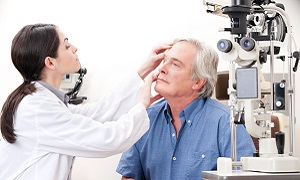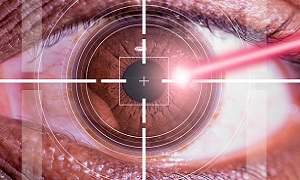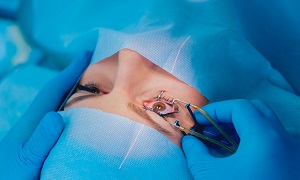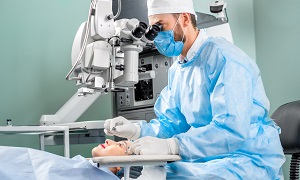Best Doctors in India for Astigmatism treatment
Best Hospitals in India for Astigmatism treatment
- City: Bengaluru, India
Hospital Highlights:
- Fortis Hospital Bannerghatta, Bengaluru was established in 2006.
- The hospital is a 276 bedded multi-specialty tertiary care facility.
- The hospital specializes in cutting-edge medical technology and dedicated patient care services.
- The hospital is equipped with state-of-the-art technologies like trans-radial angioplasty, trans-abdominal cardiac surgery, and computerized TKR navigation surgery.
- The hospital provides specialty medical services in cardiology, cardiac surgery, orthopedics, neurology, neuro-surgery, GI, and Minimal Access Surgery (MAS).
- City: Chennai, India
Hospital Highlights:
- Fortis Malar was established in 1992 and was formerly known as Malar Hospital.
- The hospital specializes in cutting-edge medical technology and dedicated patient care services.
- The hospital is multi-specialty, tertiary care facility with 180 beds.
- The hospital offers comprehensive medical care in specialties such as cardiology, cardio-thoracic surgery, neurology, neurosurgery, orthopedics, nephrology, gynecology, gastroenterology, urology, pediatrics, and diabetes.
- City: New Delhi, India
Hospital Highlights:
- Established in 1996, Pushpawati Singhania Research Institute is one of the top hospitals in the NCR region, as well as one of the top facilities in India for gastroenterology. The hospital is one of South Asia’s first institutes in medical and surgical treatment for diseases related to digestion.
- The hospital is equipped with state-of-the art facilities coupled with the latest equipment as well as renowned consultants from various parts of India as well as other parts of the world.
- City: New Delhi, India
Hospital Highlights:
- State-of-the-art technology and devoted healthcare professionals have been brought together under one roof at Venkateshwar Hospital to provide genuine medical care. The hospital’s professionals work together as a team to deliver the best possible treatment to their patients, using the most sophisticated equipment and information technology.
- Venkateshwar Hospital’s mission is to attain global excellence in healthcare by employing evidence-based, ethical clinical practices and cutting-edge technology by a team of highly skilled experts.
- City: New Delhi, India
Hospital Highlights:
- Sir Ganga Ram Hospital, New Delhi is known to provide the latest medical procedures with the latest technology in all of its units.
- The hospital has a team of reputed doctors, nurses, and healthcare professionals that ensure that patients receive quality care at affordable costs.
- Staffed with a team of highly qualified doctors, dedicated nurses, and paramedical and non-medical staff, the hospital aims to lead in healthcare delivery, medical education, training, and research.
- As per the vision of the founder, the hospital also provides free treatment to the economically weaker sections of society.
- Sir Ganga Ram Hospital also provides training to young doctors under the Diplomate in National Board(DNB) program. The DNB program at the hospital was started in 1984 and it is known for currently running the maximum number of DNB specialties in the country. It also has the distinction of having the first bone bank in India.
- City: Kerala, India
Hospital Highlights:
- Established in 2019, Apollo Adlux Hospital is the first Apollo Hospital in Kerala and the 73rd hospital owned by Apollo Group in India. With the state’s most advanced, comprehensive healthcare infrastructure and cutting-edge technologies, Apollo Adlux Hospital stands as an example of medical excellence in Kerala.
- With over 34 multi-specialty departments, the hospital believes in providing the best quality treatment to its patients at affordable rates, ensuring comfort at their difficult times.
- The 300-bed hospital is managed by a team of highly qualified and experienced experts who delivers exceptional hospitality to their patients and treats them with great compassion.
- With its affiliation with the Apollo Hospitals Group, the hospital aims in providing patients with top-notch healthcare services while also serving communities in Kerala.
- The hospital has good railway and road connections, and is conveniently close to Cochin International Airport.
- City: Gurugram, India
Hospital Highlights:
- Situated near DLF Cyber City, Gurugram, Narayana Superspecialty Hospital is one of the top medical facilities in the Delhi NCR region, catering to the needs of the people. Known for its commitment to quality medical care and patient service, the hospital is a state-of-the-art facility with planned and well-equipped sections, which includes a spacious OPD area as well as comfortable patient rooms.
- It is the closest super-specialty hospital from Indira Gandhi International Airport towards Gurugram, and also the nearest super specialty hospital from DLF Cyber City. It is also close to major residential areas in Gurugram.
- It is part of the renowned Narayana Health Group. Established in 2000, by Dr. Devi Shetty, a renowned cardiac surgeon, it has grown to be one fo India’s leading healthcare groups.
- City: Noida, India
Hospital Highlights:
- Fortis Hospital, Noida, stands as one of the oldest and most trusted healthcare institutions in the region, setting a benchmark for comprehensive medical care.
- As the second mega hub hospital in the Fortis Healthcare Group, Fortis Hospital, Noida, upholds a legacy of trust among more than 1.2 million patients. By integrating top-tier professionals with cutting-edge technology, the hospital delivers superior treatment across various medical disciplines.
- Specializing in advanced Neurosciences, Orthopedics, Kidney and Liver Transplant Programmes, Fortis Hospital, Noida has successfully performed over 1,500 transplants, solidifying its reputation as a leader in specialized medical interventions.
Astigmatism
Astigmatism is a common imperfection in your eye curvature that results in blurred distance & near vision, which is generally treatable. When the cornea of your eye or the lens inside your eye possesses mismatched curves, astigmatism occurs. The cornea is the front surface of your eye. The surface becomes egg-shaped instead of having a round ball shape. Because of this, you get a blurred vision at every distance. Often present by birth, the condition occurs in combination with farsightedness or nearsightedness. It doesn’t require corrective action if it isn’t much pronounced. You may opt for lenses or surgery if pronounced.
Causes of Astigmatism
There are two structures with curved surfaces in your eyes. They refract or bend the light onto the retina which causes the images to form. These two surfaces are the cornea and the lens. The cornea is the clear front surface of the eye and the lens is a clear structure inside your eye changing its shape to help you focus on the nearby objects. Each of these elements possesses a round curvature in an eye with a perfect shape. A lens and a cornea with such curvature refract the incoming light that forms a sharply focused image on the retina present at the back of the eye.
Refractive error: If your lens or cornea is egg-shaped and having two mismatched curves, the light rays don’t bend in the same manner resulting in two different types of images. The overlapping or combining of these images result in blurred vision. Astigmatism a kind of refractive error. When your lens or cornea curves more steeply in a direction than the other, astigmatism occurs. If the cornea has mismatched curves, you will have corneal astigmatism while if your lens has mismatched curves, you will have lenticular astigmatism.
Blurred vision can be a result of either of the two astigmatisms.
Blurred vision may be more in one direction, either vertically, horizontally, or diagonally. Astigmatism may also develop following a disease, eye injury, or surgery.
Other errors: Astigmatism may also occur with-
- Hyperopia (Farsightedness) occurs when your cornea curves too little or the eye is smaller than the usual. The light never comes to a focus on the back of the eye, when your eye is in a relaxed state. This makes the nearby objects appear blurry.
- Myopia (Nearsightedness) occurs when your eye curves too much or it is longer than the usual. The light focuses in front of your retina, instead of focusing on your retina. This, too, makes the objects appear blurry.
Symptoms of Astigmatism
The symptoms of astigmatism may be:
- Headaches
- Blurred /distorted vision
- Squinting
- Eyestrain / discomfort
- Difficulty with night vision
Diagnosis of Astigmatism
An eye examination is done to diagnose astigmatism. There are a few tests for inspecting the health of your eyes and the refraction that determines the way your eyes will bend light. Your doctor will use different instruments for the examination. He or she may aim bright light at your eyes while asking you to look through various lenses. These tests help the doctor to examine various aspects of your vision & eyes. They help to determine the required prescription for providing clear vision with contact lenses or eyeglasses.
Treatment options for Astigmatism
Corrective lenses
The doctor will treat the condition by asking you to wear corrective lenses that counteract uneven curvatures of your lens and cornea.
- Eyeglasses- These are made of lenses that help to compensate for the uneven shape of your eyes. The light bends into your eyes properly because of these lenses. They also help in correcting refractive errors like farsightedness or nearsightedness.
- Contact lenses- These can also correct astigmatism. They are available in a variety of styles and types like disposable soft; rigid, gas permeable; extended wear and bifocal. There is an increased risk of infection in the eye if you wear contact lenses for a longer period of time.
Refractive surgery
It improves vision, thereby reducing the need for contact lenses or eyeglasses. Your doctor will use a laser beam to reshape the corneal curves. This helps in correcting the refractive error. Your doctor will evaluate and determine if you can undergo surgery.













